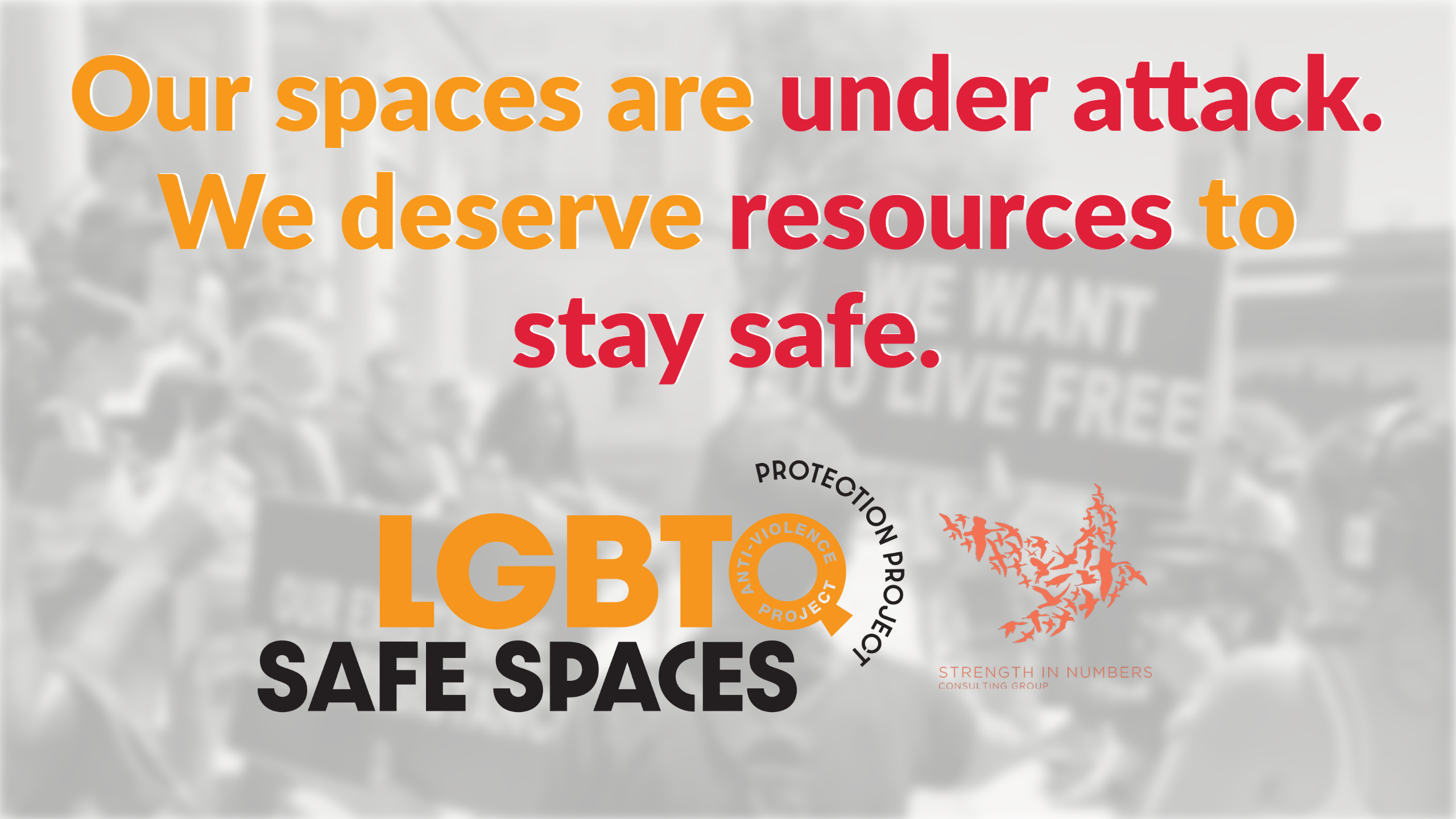
Hate-based violence is not new, nor are threats to our community. But data shows that a specific type of threat towards LGBTQ people is growing and requires a community-led strategy to solve. In the wake of the shooting at Club Q in Colorado Springs, Colorado, and countless threats against LGBTQ people and places now is the time to take action to protect our safe spaces.
“The organizations and groups we have connected with are becoming increasingly worried about what to do if something like Pulse or Club Q happens in their space, and the reality is that threat seems more likely,” says Director of Community Organizing and Public Advocacy Audacia Ray. “LGBTQ organizations are looking for solutions that help keep them safe from the harm right at their doorsteps.”
AVP has tracked the growing threats toward LGBTQ Safe Spaces and venues nationwide for nearly a decade. And according to a recently published news survey from GLAAD, nearly every state experienced some hate violence-based threat against an LGBTQ space this year, while many states more than ten. It is clear that there is a correlation between political rhetoric and hate violence, as cases and inquiries to AVP have increased since the 2016 election.
Threatening calls, emails, armed protests, doxing, misinformation campaigns, and bomb threats are ways organizations and individuals are harmed by hate violence.
And evidence suggests that the threats may grow both in volume and severity as more armed protests hit the headlines.
“We know that having good data helps us understand how widespread and severe the problem of targeted harassment and violence is in America right now. We’re proud to partner with AVP to survey LGBTQ organizations and businesses for this important and ultimately life-saving work,” says Dr. Somjen Frazer, who is the lead researcher on the project and the president of Strength in Numbers Consulting Group. “This data collection effort will hopefully shed new light on a troubling trend that will enable our communities to take decisive action toward protecting these spaces for years to come.”
To help our communities face these challenges together, AVP is launching the LGBTQ Safe Spaces Protection Project, a nationwide effort to identify needs and shift resources and policy to ensure our Safe Spaces have the tools to navigate the current crisis and survive far into the future.
The reality is that many LGBTQ organizations are under-resourced, underfunded, and unprepared to face this growing security threat. And collectively, LGBTQ people have always been able to find ways to stay safe in the face of harm. So, AVP has partnered with Strength in Numbers to develop the LGBTQ Safe Spaces Protection Project, beginning with a Needs Assessment Survey launching Tuesday, December 13.
“We always believe that centering those most affected by violence is how we develop impactful solutions to keep our communities safe,” says AVP Executive Director Beverly Tillery. “We think this initiative is the first time that LGBTQ organizations, business owners and other LGBTQ-focused groups nationwide have ever been asked about the threats they face or how they can best be protected. Now is the time to ask those questions and get the answers we need before more lives are lost or communities are harmed.”
The project is a community-driven effort to determine our core needs to protect our spaces. We plan to develop key recommendations for measures that can be implemented on the local, state and federal level.
As the largest LGBTQ anti-violence organization, AVP has been working to develop community-led strategies to support LGBTQ and HIV-affected survivors of violence since 1980. More and more organizations are reaching out from across the nation requesting our training and technical assistance programs, safety planning for groups and LGBTQ events, and support from our 24-hour crisis hotline.
And as we have learned from our work so far, every organization faces unique challenges and has unique needs due to size, geography, constituency and political climate.
“This needs assessment is just the beginning of our initiative to name and claim what we need collectively to thrive and live without fear,” says Tillery. “Our Safe Spaces should not have to deal with these threats alone. We know that as a community that we have power when we come together and now is the time for a collective strategy to preserve the safety of our institutions and organizations. “
Updated: Organizations can still complete the survey to be counted in the 2022 final report. The survey will officially close at the end of February 2023, with the first data collection ending on January 18th. The preliminary data from the January 18th collection is expected later this Winter, with the final report coming late Spring 2023. The survey is live on the LGBTQ Safe Spaces Protection Project site. If you are an LGBTQ business, organization or group, or have held LGBTQ related events in the past year, we want to hear from you today.
